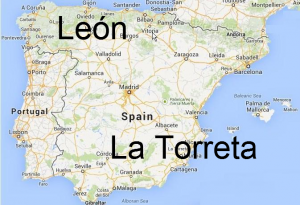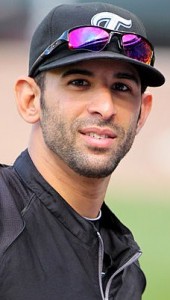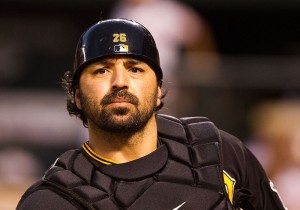Spain is full of historic place names and family names, but do they mean anything? Do Madrid and La Coruña or the family names Fernández and Iglesias have any particular meaning? Aside from historical interest, knowing the meanings of names can help the vocabulary.
 A quick look at a zoomed-out map of the Iberian peninsula reveals only a few major cities that appear to mean something and indeed do – León is lion (stress required) as one would imagine, La Torreta is the turret, and Los Palmas de Gran Canaria is the palms of the grand canary (not shown) – but for the most part, major city names refer to untranslatable historical names (e.g., Madrid, originally a Moor fortress, may be derived from the Arabic magerit or ‘place of many streams,’ appropriate it would seem for a capital).
A quick look at a zoomed-out map of the Iberian peninsula reveals only a few major cities that appear to mean something and indeed do – León is lion (stress required) as one would imagine, La Torreta is the turret, and Los Palmas de Gran Canaria is the palms of the grand canary (not shown) – but for the most part, major city names refer to untranslatable historical names (e.g., Madrid, originally a Moor fortress, may be derived from the Arabic magerit or ‘place of many streams,’ appropriate it would seem for a capital).
At the more local level, however, translations abound. Santiago de Compostela shows the compound making of its two names. Santiago is a mix of Santo and Diego or Saint James, who is believed buried there. As the story goes, a star lit the way to St. James’s grave thus beginning the famous pilgrimage* walked or cycled from the French border by hundreds of thousands of peregrinos (pilgrims) every year, and giving meaning to Santiago as well as Compostela, a mix of campo and stela or field and star (in Latin). Here, we see also how Iago (Shakespeare’s star in Othello) and San Diego got their names, and the meaning of san, santo, or santa in many Spanish-founded cities around the world (San Juan, Santo Domingo, Santa Ana) as well as the Portuguese version são (São Paulo, São Tomé, São João). Peregrino also gives us the word peregrination in English.
There are many compound or part place names that translate either from the local language or from Spanish to English. In Galicia, La Coruña’ is ‘the crown,’ Foz is ‘mouth,’ Vilalba is ‘dawn town.’ Asturias boasts the most northern point in Spain, Cabo Peñas, literally Cape of Rocks. My favourite is Viaducto de Lindabarcas or Viaduct of Pretty Boats. Caridad is ‘charity,’ Cortina is ‘curtain,’ Torrelavega could be ‘the tower bottom.’ There are many more.
Language ASIDE (Gallego) There are four official languages in Spain, Castellano (i.e., Español, what we think of as the main Spanish language), Catalán, Gallego, and Euskera. Catalán, Gallego, and Euskera are the languages of the three separatist-minded communities Cataluña, Galicia, and País Vasco, and have their own language conventions. In Galicia, the letter ‘l’ is often omitted and thus ‘La Coruña’ is written as ‘A Coruña’ in Gallego (aka Galego in Gallego!). As such, the meaning of ‘A Coruña’ may be more easily understood by the English speaker as ‘The Crown’ (La Corona).
Pronunciation ASIDE (ñ, z, and c). The ñ (pronounced enya) is the first really different Spanish stress mark the English speaker encounters. á, é, í, ó, and ú are for syllabic emphasis but don’t change the sound, whereas ñ does. The technical term is diacritical tilde and changes the n to a ny sound. Most have heard of El Niño (neenyo) and La Niña (neenya), the cyclical weather conditions that screw up travel plans in the States every 5 years or so (by warming and cooling the western Pacific Ocean with high and low surface air pressure). The ñ does make a difference and can get one into occasional trouble. For example, año means year, but ano means ass, so it’s important to wish one Feliz año (an-yo) and not Feliz ano (an-no). Think of Enya, the Irish singer, to get the right sound.
As for the letter z, we have the golfer José María Olazábal to thank for helping the world to speak better Spanish. When he burst onto the golfing scene, no one outside of Spain really knew how to pronounce his name, although we all tried. Oh-laz-a-bel and Oh-laf-a-bel were popular for a while, but he now is generally called Oh-la-tha-bel (with the stress on the tha). One shouldn’t be surprised by his second name either; half of Spain has a first or second name María (more on that later).
The letter c is probably the most region-defining sound in Spanish, sounded either as a th (e.g., Barthelona) as spoken by most Spaniards (aside from Andalusia) or an s (e.g., grasias) as spoken in Andalusia and most of the Spanish-speaking non-Iberian world. To the English speaker, it sounds like a lisp. In Spain, it’s hip to lithp.
The Toronto Blue Jays have had many Hispanic players whose names mean something when translated into English (as do other teams). Here is my list with translations to help the vocabulario by word association. Some are obvious (blanco or white) and others perhaps not so obvious (ramos or bouquets). No doubt, I have missed a few, so please let me know of others and I’ll add them to my Las Urracas de Toronto** list. I have left out names that have doubtful Hispanic provenance, for example, Darnell Coles (sprouts) and Mike Romano (Roman), or are identical, for example, Frank Viola (viola).
| Las Urracas de Toronto | English translation |
| Jose Bautista | baptist |
| Rod Barajas | decks, pack of cards |
| Henry Blanco | white |
| Pedro Borbon | bourbon (borbón) |
| Carlos Delgado | thin |
| John Candelaria | Candlemass |
| Rico Carty | rich |
| Tony Castillo | castle |
| Francisco Cordero | lamb |
| Felipe Crespo | curly |
| Victor Cruz | cross |
| Edwin Encarnación | incarnation |
| Leo Estrella | star |
| Edwin Hurtado | stolen |
| Alexis Infante | infant |
| Nino Espinosa | spiny |
| Justin Germano | German |
| Luis Leal | loyal |
| Manny Lee | read |
| Hector Luna | moon |
| Orlando Merced | favour |
| Domingo Ramos | Sunday bouquets |
| Jo-Jo Reyes | kings |
| Jose Reyes | kings |
| Alex Rios | rivers (ríos) |
| Davis Romero | rosemary |
| Ricky Romero | rosemary |
| Francisco Rosario | rosary |
| Valerio De Los Santos | of saints |
| Sergio Santos | saints |
| Moises Sierra | mountain chain |
| Hector Torres | towers |
Alas, as good as Otto Vélez, Tony Fernández, and Roberto Alomar were as players, their names don’t translate into English. Note that the –ez ending means ‘son of,’ like Mc in Scottish or O’ in Irish, and thus Fernández means son of Fernando.
As for the meaning of Fernández and Iglesias? Fernández is a name, but Iglesias means churches. So the next time you hear Julio or Enrique singing from the heart, think of them in a church. Try this particularly cringeworthy video of George Harrison’s My Sweet Lord as sung by Julio Himself, festooned with an endless supply of apparently sweet and lord-like supermodels. Well, he has loved lots.
* An entertaining book on The Way is the autobiography I’m Off Then: Losing and Finding Myself on the Camino de Santiago by the German comedian Hape Kerkiling, where he records his six-week adventure from Saint-Jean-Pied-de-Port to Santiago de Compostela (mostly by foot with a few motorized interludes). Shirley MacLaine did much to popularize el camino with her bestseller The Camino: A Journey of the Spirit, with transcript of an interview with Larry King about the book. An interesting recent movie is The Way with Martin Sheen. (Note that Josemaría Escrivá de Balaguer, the founder of Opus Dei, wrote a book entitled Camino about an entirely different way.)
** La/El and Las/Los: Las Urracas de Toronto is feminine in Spanish. La urraca is a bluejay (or magpie) and las urracas is a collection of bluejays (or magpies). The team, nonetheless, (el equipo) is masculine as are all the others (los equipos). For another translation of bluejay, check out Spanish and Major League Baseball by Jill K. Bishop, Multilingual Connections, June 14, 2012.
“Many go to seek wool and come home shorn themselves.” – Don Quixote, Miguel de Cervantes Saavedra, pg. 39 Wordsworth Classics, 1993.




Gracias por compartir con todos nosotros toda esta practica información. Con estos granitos de arena hacemos màs grande la montaña Internet. Enhorabuena por este blog.
Saludos
Muchas gracias por tu comentario. Espero visitar tu region. Tus fotos en Ribera d’Ebre son buenísimas. Saludos